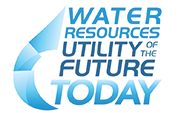History


In the past, not even the distant past, used water wasn’t treated. Until 1961, there wasn’t a singular system to remove wastewater from homes or businesses, but rather a combination of strategies all of which disposed of raw wastewater into the Arkansas River. Our first water reclamation facility, the Adams Field Facility came into service in 1961 with primary treatment only. In 1972, new regulations were passed which required the need for secondary treatment processes.
Water that flows out of homes, workplaces, and even manufacturing facilities, becomes our responsibility. At our water reclamation treatment facilities, we use a safe and natural process to treat this “used” water, and return it to the environment—in our case, this is the Arkansas River. The water released by LRWRA often exceeds the water quality standards of the Arkansas Department of Environmental Quality (ADEQ) and the U.S. Environmental Protection Agency (EPA).
Our process begins as wastewater is transported from homes and businesses through over 1,400 miles of public sewer piping, all maintained by LRWRA, to one of three water reclamation facilities. These facilities have the capacity to treat up to 56 million gallons of used water a day, not accounting for the Peak Flow Attenuation Facility which will store up to 61 million gallons of used and run-off storm water at times when rain water exceeds the maximum capacity of the treatment facilities.
We’re so committed to reducing waste, that we take the organic sludge removed from treated water, introduce it to another group of bacteria that ultimately produces methane from which we produce power for Fourche Creek Water Reclamation Facility.

Utility of the Future Award
In 2017, we were one of twenty-five utilities in the nation (out of 16,000) to be recognized for our innovation and forward-thinking strategies that manage the storm and used water of an entire city. The Utility of the Future Award, given by the National Association of Clean Water Agencies, was granted to us in part for our reuse of methane gas collected during the purification process and using it to power our Fourche Creek Water Reclamation Facility.

PISCES Award
We’ve been awarded the EPA’s Performance and Innovation in the SRF Creating Environmental Success (PISCES) Award for our innovative thinking and approach to ratepayer care with our Sewer Service Line Replacement Program (SSLRP). Since January 2013, this program has offered qualified ratepayers up to $2,500 in reimbursement toward the repair or replacement of private sewer lines. Adding value to homes, preserving our system and reducing the chance of wastewater backups into our ratepayers’ homes.

GEM Awards
At LRWRA, we believe in acknowledging the people who make our award-winning processes possible. We created the GEM Awards to acknowledge staff who make what we do seem easy by Going the Extra Mile.